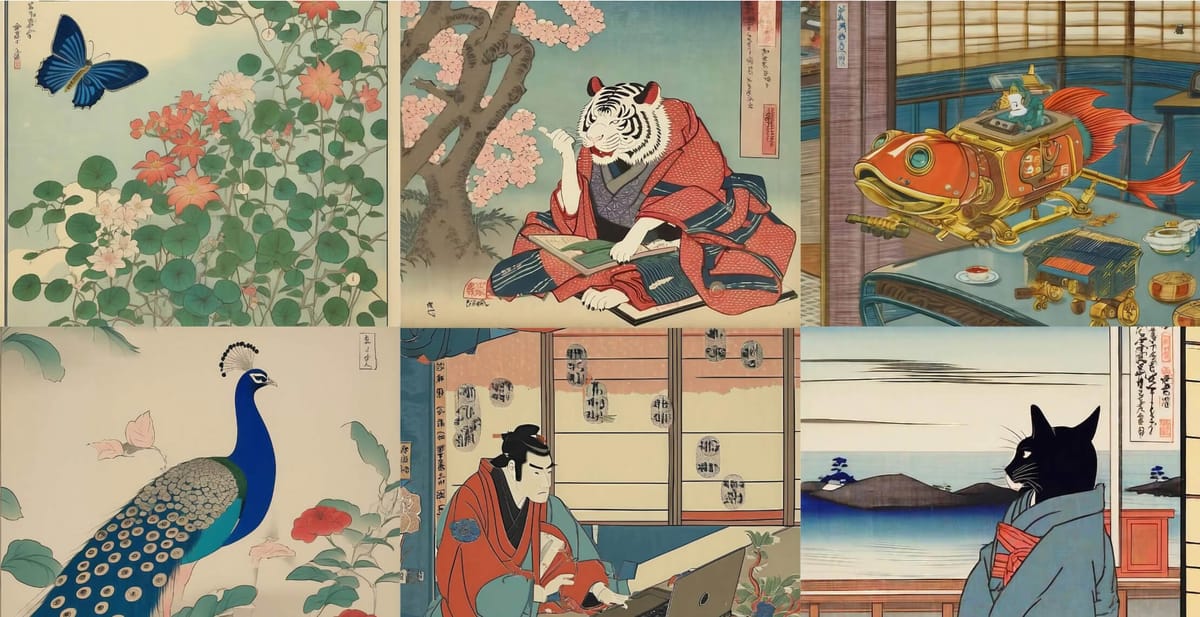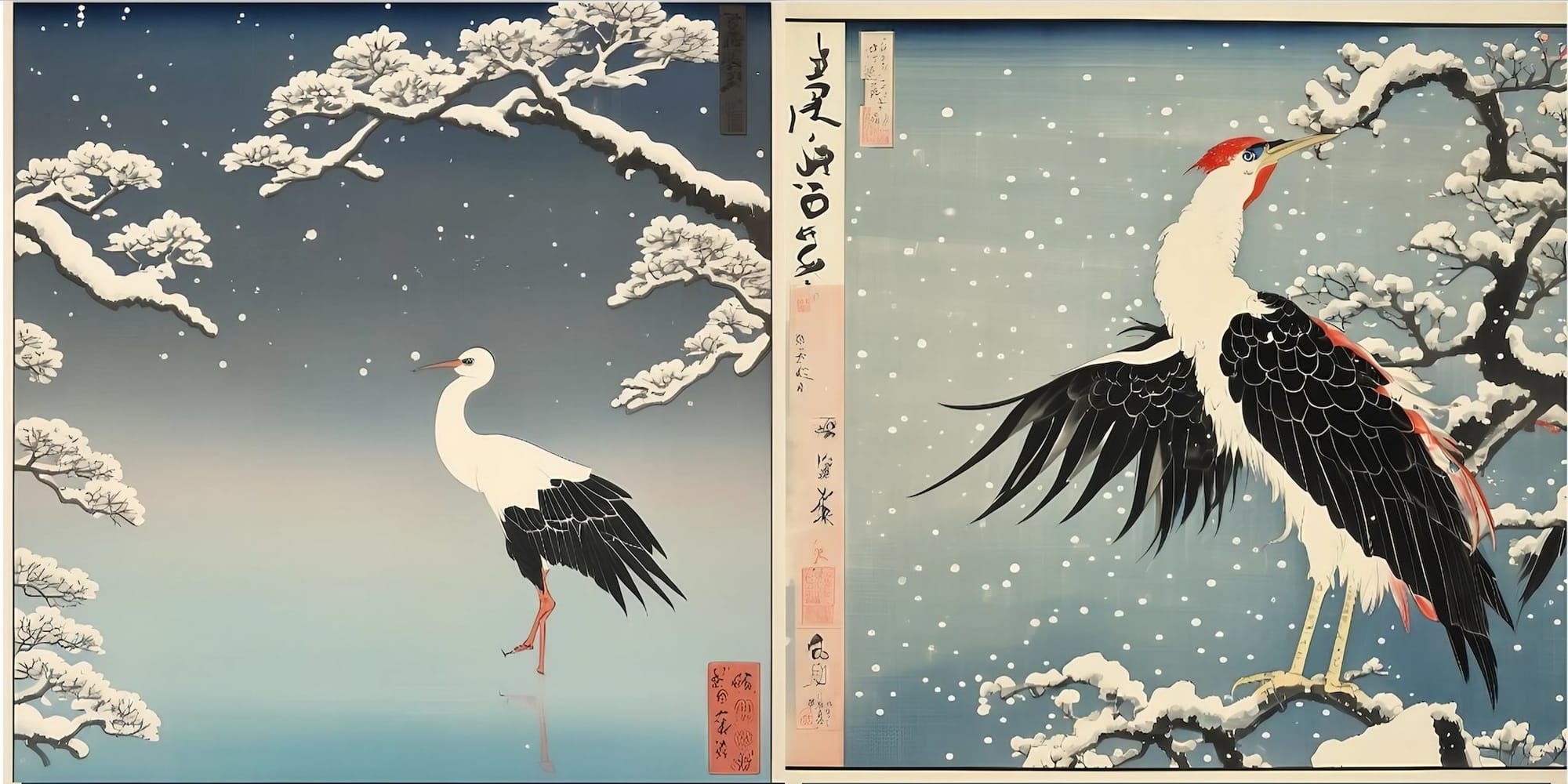
Tokyo-based AI startup Sakana AI has released two image generation models: Evo-Ukiyoe and Evo-Nishikie. These models create ukiyo-e style illustrations and colorize historical prints.
Evo-Ukiyoe generates ukiyo-e style images from text prompts. It was trained on 24,038 high-quality ukiyo-e prints provided by Ritsumeikan University's Art Research Center.
The model recreates key ukiyo-e features including:
- Sharp lines typical of woodblock printing
- Color gradients mimicking hand-applied pigments
- Balanced compositions
- Accurate depictions of traditional Japanese elements


Kalanuwat Tarin, lead engineer and classical literature researcher, said, "We aimed to create an AI that understands ukiyo-e's essence, from its color palette to the paper texture."
The other model, Evo-Nishikie, colorizes monochrome ukiyo-e prints and book illustrations. It can:
- Turn single-color prints into multi-color nishiki-e style images
- Add color to Edo-period book illustrations
- Create color variations of existing ukiyo-e prints

Professor Ryo Akama, Director of Ritsumeikan University's Art Research Center, noted, "Evo-Ukiyoe could inspire artists who draw from ukiyo-e. For enthusiasts, it may encourage deeper exploration of original ukiyo-e as classical art."

On Evo-Nishikie, Akama added, "Colorizing classical literature illustrations creates new possibilities. Combined with kuzushiji reading systems, we can envision overseas readers enjoying colorful illustrations while reading original classical texts."
Sakana AI sees these models as tools for education, content creation, and cultural promotion. They show how AI can connect traditional culture with modern technology, offering new ways to engage with cultural heritage in the digital age. The company hopes it will help to increase interest in Japanese art and culture among domestic and international audiences.
Evo-Ukiyoe and Evo-Nishikie are available for research and educational purposes only on Hugging Face.

